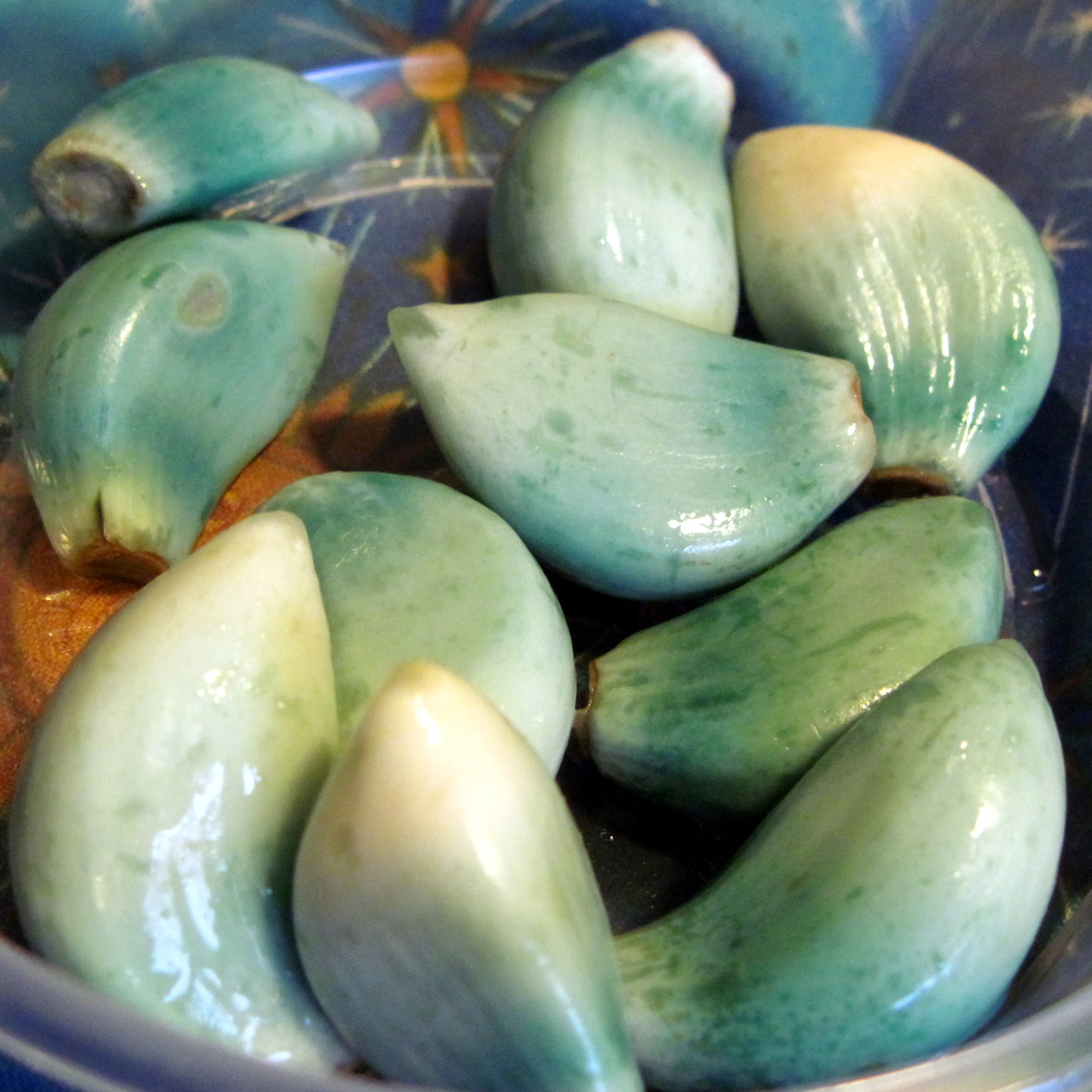Blue Bulbs
The minced garlic on my pizza is blue.
It wasn’t blue when I added it with the other toppings, but it must have been holding its breath in the oven because it is now definitely blue. So what’s going on? Is this normal? Is it safe to eat? Is it suffering from depression?
Despite the poisonous hue, blue garlic is completely normal and safe to eat. When garlic cloves are stored in a cool place for a long period of time, they develop high levels of a molecule called isoalliin. This sulfur-containing molecule belongs to a family of flavor precursors that, when broken down, give garlic its pungent taste.
Flavor precursors are tucked away safely in special cellular compartments. When the cells of a garlic clove are damaged in any way, say by a hungry herbivore or a garlic press, the precursors are degraded by enzymes stored in a different part of the cell. Chemical reactions ensue that produce pungent odors and sharp flavors selected to ward off pests and herbivores but that actually taste pretty amazing sautéd and paired with oregano and mozzarella cheese. Life is funny that way.
But odor and taste aren’t the only results of flavor precursor degradation. degradation of isoalliin generates “color developers,” which are responsible for giving garlic a blue, green or yellow hue. The reactions that form these pigments are optimal at lower pHs, like in pizza sauce or pickling vinegar. Mincing garlic that had been stored in a cool pantry and adding it to a pizza was actually the perfect setup for blue toppings.
“Garlic greening,” as it is known in agricultural circles, can lead to serious financial losses. No one want’s to buy poisonous-looking bulbs. Garlic can be stored at higher temperatures, treated with very low pH solutions or sprayed with chemical compounds to inhibit greening. However, because the same molecules that produce color developers are also linked to flavor, greening is a problem that can never truly be bred out. My personal solution is to be less picky and eat more pizza.
Brian Rutter, PhD, is the cofounder of Thing in a Pot Productions and a postdoctoral researcher in plant biology at Indiana University. Subscribe to our newsletter to receive our “Things About Things – Odd Facts About Plants” and video production tips in your inbox every month!
Works Cited:
De Iseppi, A., Curioni, A., Marangon, M., Vincenzi, S., & Lomolino, G. (2021). Garlic greening: Pigments’ biosynthesis and control strategies. Italian Journal of Food Science, 33(1), 73-83.
Jones, M. G., Hughes, J., Tregova, A., Milne, J., Tomsett, A. B., & Collin, H. A. (2004). Biosynthesis of the flavour precursors of onion and garlic. Journal of Experimental Botany, 55(404), 1903-1918.
Kubec, R., & Velíšek, J. (2007). Allium discoloration: The color-forming potential of individual thiosulfinates and amino acids: Structural requirements for the color-developing precursors. Journal of Agricultural and Food Chemistry, 55(9), 3491-3497.

